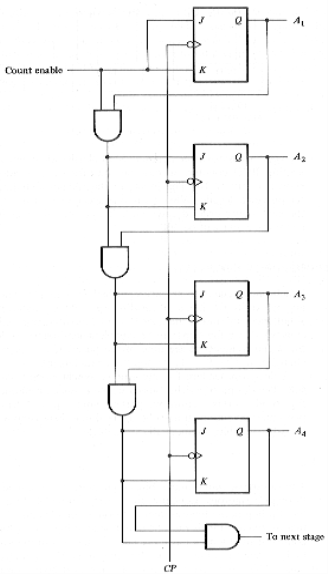Counters are generally made up of flip-flops and logic gates. Like flip-flops, counters can retain an output state after the input condition which brought about that state has been removed. Consequently, digital counters are classified as sequential circuits. While a flip-flop can occupy one of only two possible sattes, a counter can have many more than two states. In the case of a counter, the value of a state is expressed as a multidigit binary number, whose `1's and `0's are usually derived from the outputs of internal flip-flops that make up the counter. The number of states a counter may have is limited only by the amount of electronic hardware that is available. The main types of flip-flops used are J-K flip-flops or T flip-flops, which are J-K flip-flops with both J and K inputs tied together. Before that, here's a quick reminder of how a J-K flip-flop works:
| J input | K input | Output, Q |
| 0 | 0 | Q |
| 0 | 1 | 0 |
| 1 | 0 | 1 |
| 1 | 1 | not Q |
T flip-flops are used because set/reset ([1,0] [0,1]) functions are seldom used. Only the "do nothing" and toggle ([0,0] [1,1]) functions are used. Logic gates are used to decide when to toggle which outputs. Below is an example of a synchronous binary counter, implemented using J-K flip-flops and AND gates.
Read More








No comments:
Post a Comment
Please provide valuable comments and suggestions for our motivation. Feel free to write down any query if you have regarding this post.